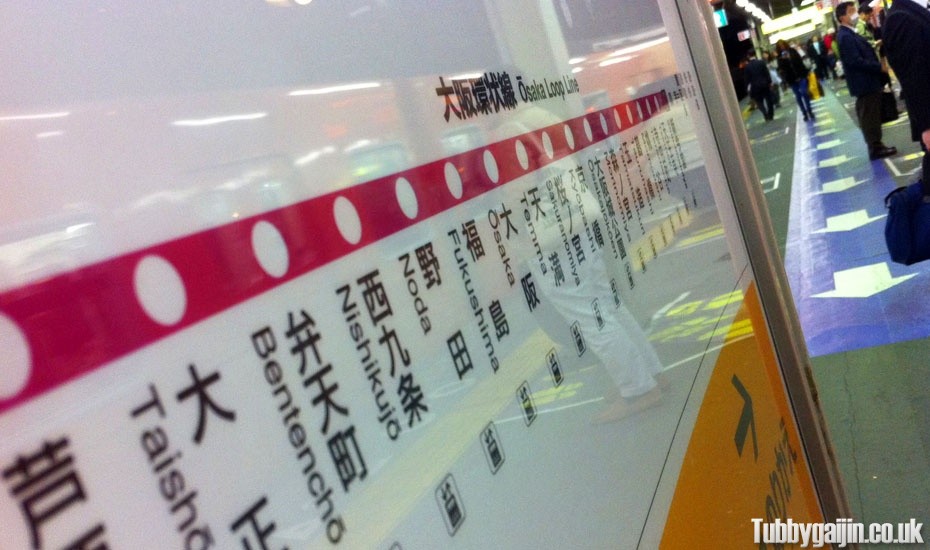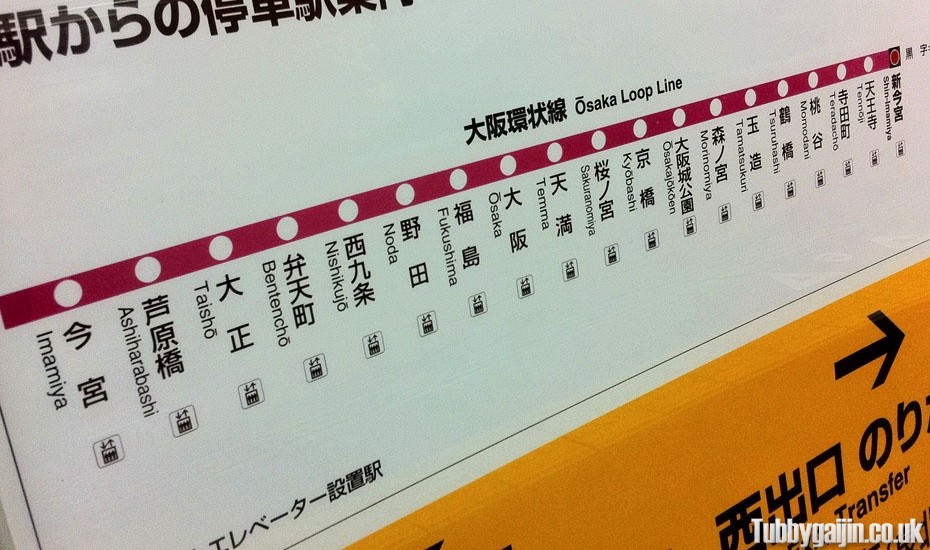
As I mentioned a while ago in my bursting the bubble post, my main exposure to Japanese these days is when I’m travelling to and from work. But even those fleeting moments can be a learning opportunity!
Most railway lines in Osaka have these handy boards on the platform, they show all the stations on the current line and sometimes a station number(much easier to remember for visitors!). The thing I find them most useful for isn’t travelling, but comparing words to find patterns, and in turn, identify the kanji.

Let’s look at some examples. This is the station board for the Osaka Loop Line(大阪環状線, Ōsaka kanjō-sen) – it’s Osaka’s equivalent of Tokyo’s Yamanote line, it’s also the line I live on and use just about every day.
First, let’s look at two stations, Sakuranomiya and Morinomiya, looking at the romaji we can see the end of both names are similar, so time to look at the kanji. It’s helpful to know hiragana and have a decent understanding of Japanese phonetics in order to know how to break the words up.
Sakuranomiya – 桜ノ宮
Morinomiya – 森ノ宮
So the last two kanji match, pretty safe to say they make up the “nomiya” part then, but where to separate them? A quick look at Imamiya(far left) – which is composed of only two kanji – 今宮 – means they must be “ima” and “miya” based on the patterns in the other station names, making ノ no and 宮 miya! From there it’s easy to work out the other kanji by process of elimination,
Sakuranomiya – 桜(sakura) ノ(no) 宮(miya)
Morinomiya – 森(mori) ノ(no) 宮(miya)
Imamiya – 今(ima) 宮(miya)
Check that out, we just identified five kanji!
Obviously there’s WAY more to kanji than this, the different readings etc… but it’s a start!
Be First to Comment